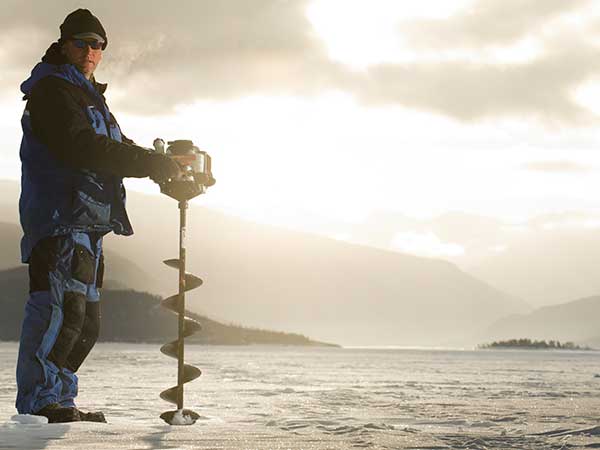(Provided by Creations Media)
 The Fine Art of Layering Clothes for Cold-Weather Fishing
The Fine Art of Layering Clothes for Cold-Weather Fishing
Ice anglers often battle brutally bitter conditions, which makes choosing the right winter attire paramount in the quest to catch more fish.
Staying comfortable on the ice allows you to fish harder, longer, says veteran cold-weather fishing guide Bernie Keefe. Once you start shivering or cant feel your toes, both efficiency and enjoyment are gone with the wind.
Hailing from the frequently frigid Colorado high-country near Granby, Keefe wins the cold war by strategically layering warm clothing to allow personal climate control no matter the conditions.
Layering lets you adjust to the temperature and your activity levels to stay happy and fishing hard all day long, he says.
Conversely, simply throwing on a massive, bulky coat puts all your eggs in one basket. If you get warm and all youre wearing on top is a t-shirt and giant parka, your only options are sweating it out inside the thick jacket or taking it off and freezing to death, he says, noting that the sweatier option can also end in hypothermia, once profuse perspiration sparks the cooling process.
Keefes personal layering system begins with merino wool long underwear over the unmentionables, followed by warm and lightweight fleece pants and shirt such as Clam Outdoors Sub-Zero Base Layer.
After the fleece, I add a pullover hoodie and fleece vest on top, then put on my outerwear, he says, noting that Clams Ice Armor LiftSuit offers a fine blend of mobility, warmth and buoyancy.
Dont forget your head, he laughs, only half kidding. I use an Ice Armor Neck Gaiter and thick fleece Toque, which keep my head and neck warm no matter what.
On his feet, Keefe starts with two pairs of moisture-wicking socks, then adds a heavy pair of wool socks followed by waterproof, professional-grade winter footwear such as Clams Ice Armor Onyx boots.
Your hands are equally vulnerable yet mission critical, he adds. I bring a heavy pair of gloves for non-dexterous daytime duties, plus two pairs of light gloves for holding the fishing rod and other delicate tasks that require me to use my fingers. Since the light gloves get cold, fast, I keep the pair Im not wearing against my chest, and rotate the pairs frequently so Im always wearing warm gloves.
Clothing care is also important, Keefe says.
When you get off the ice at the end of the day, dont peel everything off and throw it in a pile or youll be miserable tomorrow, he warns. Set your boot liners, gloves, socks, underwear and everything else where it can dry out overnight, otherwise it will still be wet in the morning and let the cold in faster than you can say, Shoot, Im freezing.





